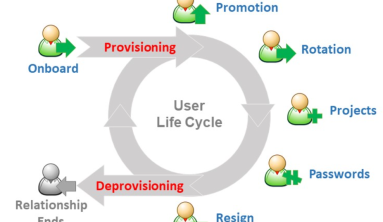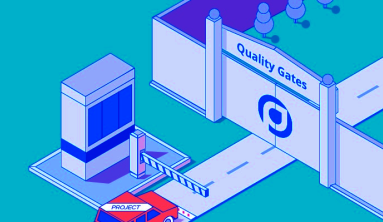Many enterprises tend to outsource software development work to a partner for several needs and reasons:
- They need to find and hire professional and experienced software development teams while the employment market is harsh and tight;
- The business landscape is inevitably moving fast, so companies need a trusted partner to accelerate time to launch an innovative product;
- Software development outsourcing is sought due to cost reduction and increasing demands from technology professionals who tend to have higher needs when having them in house.
Both the outsourcing provider and the partner’s team have to set their minds on achieving the best possible outcome out of the software development partnership. Only a close and transparent relationship guarantees that high standards will be met and innovative solutions for today’s environment will be created.
Learn more about the three fundamental areas that boost successful business relationships to reach mutual goals, share a vision and communicate clearly.
Discover 3 key areas to nurture in a software development partnership
A skilled, experienced partner team will work on a code together with your developers by improving a product and forging good business relations. A successful software development partnership means integration (when it comes to both subject matter, people, and business) and collaboration to solve problems, finding solutions and discovering possibilities.
At TIGO Solutions, we love to build long-term software development partnerships with our clients. We have been working with some of them for several years. Thanks for such close cooperation, we now specialize in offering clients our expertise and help, fully understanding their visions, needs, and objectives by creating applications tailored especially for them and the future users.
Tips in the following sections are based on our experience in cooperating with dozens of clients in the last 5 years. Our insights focus mainly on the business and relational side of a good partnership, this time we will not raise issues related to technologies.
Learn more about the three key areas of a successful partnership.
1. Communication
You are never too busy to say what you need – there are no excuses for poor communication.
Thanks to software development partnership, a client’s team can benefit in many ways by getting a new perspective on a project or discovering other attitudes and communication standards. Nevertheless, such benefits are just one element – that can be inefficient in a situation where partners do not communicate what they expect from one another. Open, transparent communication is essential when it comes to partnership between a client and software development company.
What must be stated clearly?
Surely, the team’s responsibilities responding to the client’s requirements and goals are the key messages. Such arrangements can be broken down into smaller sections of information and declared in many shorter meetings and video-calls. The challenge is to create a flawless understanding of every party from a technological, logical, and business point of view.
We always highlight the fact that everybody in an organization is responsible for communication effectiveness and the way our thoughts are expressed. A good example, of course, comes from those who manage, or have direct contact with partners or their representatives.
Quick tips to remember about communication in a software development partnership
- Introduction is the key – who am I talking to?
Your development team has to know the key stakeholders. It will help to solve many complex issues during cooperation and choose the right tone for the way our partner speaks. Different tone and the needs of your audiences ought to be treated with respect during every communication. It may happen that some partners will want a report or documentation on a given issue, while others will be satisfied with a short presentation. - It is recommended that at the very beginning of the project partners and their representatives meet in person and talk, preferably live. Although in the era of technological development, a longer video conference will be equally authentic, binding and relevant. Thanks to this kind of introduction, team members will feel more at ease with the PO or other client representative. On the other hand, it will be easier for the client to talk to the members of the remote development team, who may ask for advice, opinions or raise concerns.
TIP: Communication is better when we talk to Janek, who is a developer willing to help, not to Resource X, who has not reached the requirements. Besides, if you have met someone before, the resistance to speaking in a foreign language decreases dramatically, at the same time the freedom and clarity of communication increase.
- Maintain a successful flow of communication – Often organizations designate a representative, usually a Project Manager, responsible for setting monthly or weekly meetings to inform partners about work progress, changes and updates in projects. In a situation when you outsource to a different country, tools such as Slack, Zoom, or Appear will support the quick exchange of information.
- Agility in communication – Both parties should feel listened to – it is important to keep effective communication on both sides. Meaning: every question receives an answer as soon as possible. It does not need to be written in great detail. Often, short feedback is enough, for example: “Thanks for the message. I understand your question but we are already finishing work. When I come to the office in the morning, I will answer more comprehensively.” It helps to maintain a smooth flow of information despite the time zone differences.
- Write a Communication Policy – Before both teams start to communicate, it is a good idea to create a Communication Policy. The issues raised have to be: true, reliable, timely and well-balanced. The policy states what issues should be discussed first during every introduction, in what manner, and what topics are unacceptable.
- Try to create an office environment online – Seamless communication in software development partnership in any project is about expressing ideas, issues, and concerns precisely and using terms and words known and understandable for the interlocutor. Use as many tools as possible: calls, voice chats, video calls, screen sharing, presentations, and emails, depending on the topic’s complexity.
2. Trust
Outsourcing is perfect if it’s built on trust.
Initially, take some time to get to know the members of the team. Put faces to names and treat them like the partner you expect them to be. Ask them to divide the whole project into certain milestones so that you have full visibility about the progress and health of the project and there is no negative surprise during project delivery.
By treating your outsourcing provider as a partner, you will cultivate a relationship of mutual respect that incentivizes the outside team to bring their best work to help your company. Your outsourcing provider has unique experiences and capacities that could make them a significant asset to your company beyond just completing required tasks.
If appropriate, you could invite your provider to contribute to business decisions. To establish trust, give them the space to work without excessive supervision from your team. Accept that your provider may not solve a problem exactly the same way you would; however, they might bring a solution to the table that exceeds your expectations. Trust will allow both parties to work freely and collaboratively as partners rather than as clients.
When it comes to trust in software development partnership, it is crucial to:
- Be transparent – Neither side should hide relevant information – it should work quite oppositely – both ought to be focused on building and maintaining mutual trust. When the partnership does not go as expected, great partners try to solve problems together. Avoid looking for someone to blame or giving unreasonable warnings to cut off the cooperation. The fact is that many issues can be solved smoothly at the early stages. Transparency saves everyone a lot of frustrating complications.
- Both sides should believe in each other’s professionalism – When deciding to cooperate, the customer should know the prices of the software development provider and be informed about any possible deviation in the final price relating to the original estimations. Once a client agrees on the prices and conditions, they should not assume later that estimation was exaggerated. Such suspicions may significantly affect trust between partners and undermine the success of every cooperation. Thanks to openness in financial matters, in case of doubts, both parties can discuss them together without concerns.
- Nobody corrupts reality – Professional development teams do not try to present an incremental demo to make it look ready (knowing that the outcome is far from expected). The moment you show the results of your work, share what you managed to work out.
- Nobody is afraid to admit that they do not know something – Do not avoid answering difficult questions. Guide the team to have the courage to admit mistakes or lack of knowledge, or delay and be ready to discuss them to find a solution, not a scapegoat.
3. Common goal, vision & success
Be clear about your common goals to build the best strategy and reach for success, together.
Everyone – both software development provider and a partner make one collaborative team. Both parties should know and understand the product’s goal and vision and strive toward them. Such unanimity is a very strong motivation for achieving mutual success. The other party should not be treated as strangers, but as collaborators (customer and supplier) for the common gain. This is facilitated by conducting regular meetings, e.g. demos, planning, retros, but also the time devoted to dailies – all this will pay off.
Long-term goal(s)
Goals – show and give priority to the direction of a partnership. Together, a partner and provider define: why they cooperate, what their common aim is and when will they get there. The visions have to be consistent, innovative, and predict a real impact.
Many lasting partnerships that identified and developed shared goals found ways to serve one another and at the same time be closer to fulfilling individual missions – together. It can work out perfectly even though the long term goals are different. Good partners will always find a way to take a turn in to be closer to each other on the path of business and development to win on the market.
Shared vision where both partners succeed
Visions are the final expected future conditions that companies endeavor to reach, defining where they plan to be within a given time.
It is said that shared visions are more profitable in a wider sense than shared goals in the long run. Why? Shared visions facilitate cooperation much better – the closer the mindset, the policies, and beliefs are, the easier the performance. Imagine that your company cares about being environmentally responsible and eco-friendly – if your partner also goes “green”, the enthusiasm to work together will grow. It is also a good idea to think about a workable business model where partners’ roles are taken into account and defined.
Summary
In conclusion, we want to share a quote that expresses what was written above.
Dave Walker, director of technology at pay-as-you-go storage company Lovespace is quite experienced when it comes to outsourcing projects. He often comments on satisfied and dissatisfied cooperations, highlighting the unexpected character of such projects where you embrace both risk and great success.
Walker gave an almost perfect definition of an outsourcing partnership:
“It is a relationship which needs open and constant communication to build the trust needed that both sides are looking out for each other’s best interests.”
We hope that any business relationship will bring you profits, satisfaction and great experiences. If you have any inquiries about software development partnership or you are looking for an experienced and proven partner in building your product – here we are! – click on banner below and send us your questions.
Source: Brainhub







